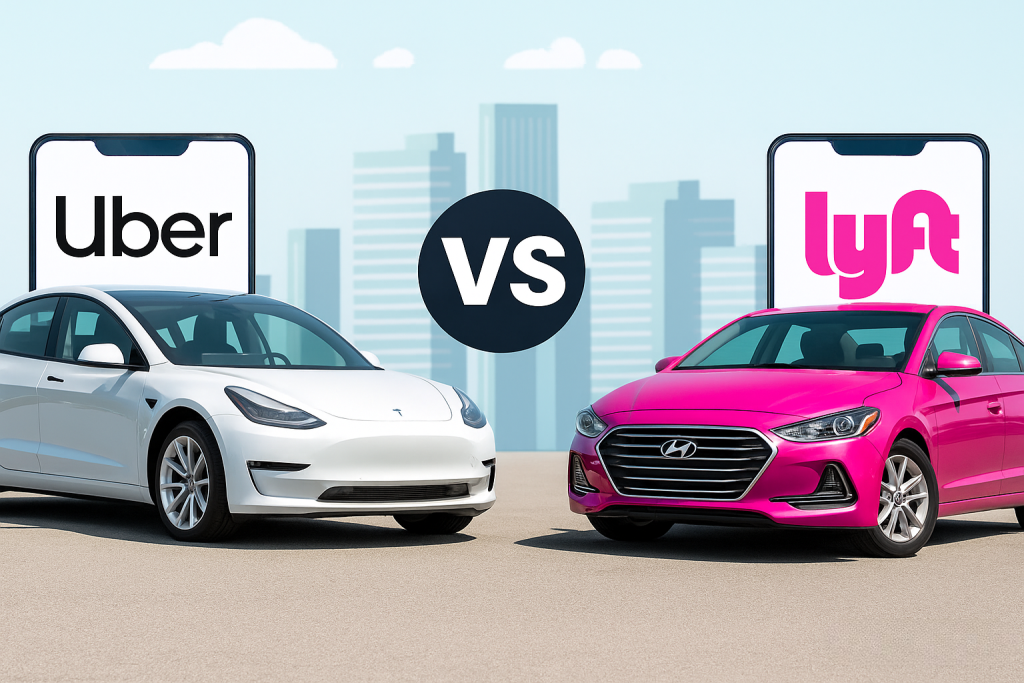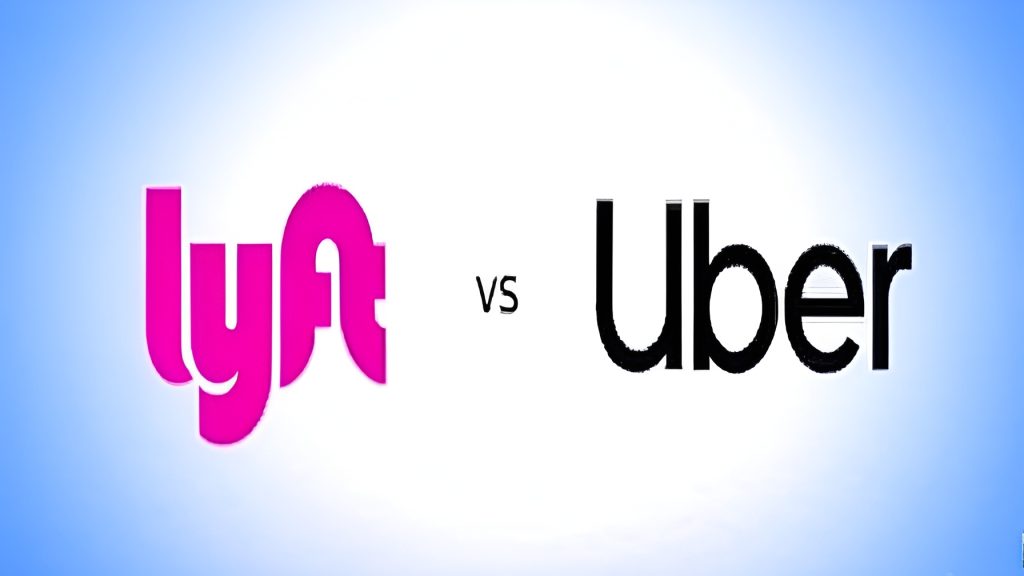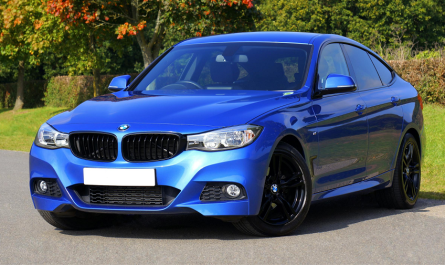Introduction
Hey there, fellow road warrior! Picture this: You’re running late for a meeting, your phone’s battery is dying, and you need a ride now. Do you fire up Uber or Lyft? It’s a dilemma millions face every day, and the burning question on everyone’s mind is simple: Is Uber or Lyft cheaper? In this no-nonsense guide, we’ll dive deep into what makes these two rideshare titans tick, break down their pricing like we’re chatting over coffee, and help you snag the best deal without the headache. Saving a few bucks per ride adds up fast, especially if you’re hopping around town regularly. Let’s get you rolling smarter in 2025.

Uber and Lyft burst onto the scene back in the 2010s, revolutionizing how we get from point A to B. Uber, the big blue icon, started as a luxury service but now offers everything from budget rides to fancy black cars. Lyft, with its friendly pink mustache, positions itself as the more laid-back alternative, emphasizing community and driver perks. People compare them constantly because they’re neck-and-neck competitors in most U.S. cities. Both apps let you hail a ride with a tap, track your driver in real-time, and pay seamlessly. But when it comes to your wallet, the differences can surprise you. We’ll unpack it all, so you can decide: Is Uber or Lyft cheaper for your next trip?
How Pricing Works: The Basics of Uber and Lyft Fares
Let’s start with the fundamentals. Neither Uber nor Lyft slaps a one-size-fits-all price tag on rides anymore. Instead, they use dynamic, upfront pricing that calculates your total cost before you even book. This means you see an estimate right away, no more guessing games at the end. But under the hood, both build fares from a few key ingredients: a base fee to start the ride, charges for time and distance, and extras like surges when things get busy.
For Uber, the standard UberX ride (their most popular economy option) kicks off with a base fare around $2.50 to $3.00 in many cities, plus about $0.40 per minute and $1.00 to $1.50 per mile. But here’s the twist, in 2025, Uber’s “upfront pricing” system uses AI to crunch data like traffic, demand, and even your route history. It spits out a flat total that might not match the old math exactly. This setup lets Uber adjust fares on the fly, sometimes charging passengers more while paying drivers a fixed amount. Lyft works similarly with its Standard rides. Expect a base of $2.00 to $2.50, $0.30 to $0.45 per minute, and $0.80 to $1.20 per mile. Lyft also rolled out upfront pricing in recent years, decoupling what you pay from what the driver earns, which has bumped their “take rate” (the company’s cut) to around 30-50% on average.
Both apps factor in minimum fares, usually $5 to $8 for short hops to ensure drivers don’t lose money on quick trips. And don’t forget booking fees! Uber tacks on $2 to $3.50 per ride for “platform support,” while Lyft’s service fee hovers at $1.50 to $3.00. These aren’t huge, but they add up if you’re a frequent rider.
The big equalizer? Surge pricing , or what Lyft calls “Prime Time.” When demand spikes (think Friday nights or bad weather), prices multiply by 1.5x to 3x or more. Uber’s surges show as a multiplier badge in the app, while Lyft displays a percentage increase. In 2025, Lyft’s CEO has called surges “deeply unpopular,” so they’ve dialed back aggressive hikes in some markets, making Lyft feel more predictable during peaks. Still, is Uber or Lyft cheaper overall? On average, Lyft edges out with fares about 10-15% lower in tests across major cities, but it flips based on the moment.
What Influences the Price? Key Factors That Swing the Scales
Prices aren’t set in stone, they dance to the tune of where you are, when you ride, and what kind of wheels you want. Understanding these factors helps you game the system and answer “is Uber or Lyft cheaper?” for your specific situation.
First up: location. Rates vary wildly by city because local regulations, gas prices, and competition play in. In bustling New York City, expect higher baselines, UberX might run $1.20 per mile versus $0.90 in laid-back Austin. Los Angeles and San Francisco top the charts for expense due to traffic and living costs, while smaller towns like Denver or Atlanta keep things affordable. Pro tip: If you’re traveling, always check the app’s price estimator for your spot.
Next, time of day matters big time. Rush hours (7-9 AM and 4-7 PM weekdays) trigger surges as everyone commutes. Late nights after events or during holidays? Same deal. Uber’s algorithm is notorious for quick spikes, sometimes doubling fares in minutes. Lyft tries to smooth this with scheduled Prime Time zones, but in 2025, both have faced backlash for “permanent surges” in high-demand areas like airports. Avoid peaks if you can wait 15 minutes, and prices might drop 20-30%.
Then there’s ride type. Stick to basics like UberX or Lyft Standard for the cheapest option; they’re nearly identical sedans for 1-4 passengers. Need more space? UberXL or Lyft XL (for 6+ people) costs 1.5x to 2x more think $30-50 for a group airport run versus $20 solo. Premium picks like Uber Comfort (extra legroom) or Lyft Lux add $5-15 on top. In 2025, Uber’s expanded its “Comfort Electric” for eco-rides, which might save a buck or two on green fees in some cities, but Lyft’s shared rides (like Lyft Shared) can undercut Uber Pool remnants by 20% when available.
Finally, demand surges are the wild card. High rider volume means algorithms jack up prices to lure more drivers. Uber’s system is more aggressive, with multipliers up to 4x in extreme cases, while Lyft caps theirs lower in many spots. Weather, events, or even pandemics (remember 2020?) amplify this. Bottom line: In low-demand times, Lyft often wins on price; during chaos, Uber’s wider driver network might stabilize costs faster.
- Urban vs. Suburban: City centers surge more; suburbs stay steady.
- Weekdays vs. Weekends: Friday/Saturday nights? Budget extra 50%.
- Weather Impact: Rainy days boost fares by 25% on average.
By tweaking your timing or ride choice, you can shave dollars off without much effort.
Real-World Examples: Crunching Numbers for Everyday Trips
Theory is great, but let’s get real. Is Uber or Lyft cheaper in actual scenarios? We pulled from 2025 data across cities to show sample costs for common jaunts. Remember, these are estimates always use the apps for live quotes, as prices fluctuate. (Averages based on mid-day, non-surge rides in standard vehicles.)
Start with a short city ride: Say, 3 miles and 10 minutes across downtown. In New York City, UberX clocks in at about $14-18, while Lyft Standard hits $12-16. Lyft saves you $2 here, thanks to slightly lower per-mile rates. Head to Los Angeles for a similar hop? Uber might charge $15-20 (traffic eats time), but Lyft often undercuts at $13-17, making it the winner in sunny SoCal.
Now, amp it up to a longer city commute: 10 miles, 25 minutes. In Chicago, expect Uber at $25-30 and Lyft at $22-27. The gap widens if you hit mild surge Uber could jump to $35, while Lyft stays closer to $28. For budget hunters, Lyft’s edge shines in mid-sized cities like this.
Airport runs are a classic pain point. Take JFK to Midtown Manhattan (about 20 miles, 45 minutes). UberX averages $70-100 in 2025, factoring in tolls and traffic. Lyft? $65-95, often cheaper by $5-10 because of less aggressive airport surcharges. In LAX to downtown LA (18 miles, 40 minutes), Uber runs $45-60, but Lyft dips to $40-55, users report Lyft as the go-to for Hollywood jaunts to dodge Uber’s higher LA baselines.
For group or long-distance trips, differences grow. A 15-mile suburban haul with XL seating? UberXL: $40-55; Lyft XL: $35-50. In tests from Boston to Logan Airport, Lyft totaled $50 versus Uber’s $58, saving $8 on a family of four.
- Short Trip (2 miles, 8 min) in Atlanta: Uber $10-13; Lyft $9-12. Lyft wins.
- Night Out (5 miles, 15 min) in Miami, with surge: Uber $25-35; Lyft $22-30. Still Lyft, but both sting.
- Cross-City (25 miles, 50 min) in Seattle: Uber $45-60; Lyft $40-55. Lyft’s lower time rates pay off.
In head-to-head tests (like recent Boston challenges), Lyft came out $9 cheaper over multiple rides and faster twice out of three. But in surge-heavy Vegas? Uber’s network evens it out. The verdict so far: Lyft trends cheaper by 10%, but check both savings vary by 5-20% per trip.
Hidden Costs That Sneak Up on Your Bill
You think you’ve nailed the base fare, but bam extras pile on. Both apps keep most transparent, but watch these in 2025:
- Tolls and Fees: Automatic pass-through for bridges or highways. NYC’s Holland Tunnel? Add $10-15 to either. Airport surcharges hit $5-10 for drop-offs.
- Cancellation Charges: Bail before pickup? $5-10 penalty if the driver’s en route. Uber’s stricter on short-notice cancels; Lyft gives a grace period.
- Tips: Optional, but drivers love 15-20%. Apps prompt you post-ride skipping won’t affect service much, but tipping via app (not cash) tracks for ratings.
- Promos and Subscriptions: Uber One ($9.99/month) waives booking fees and gives 10% off; Lyft Pink ($9.99) does similar with priority pickups. If you ride weekly, these pay for themselves.
Other gotchas? Cleaning fees ($20-150 for messes) or wait time over 2 minutes ($0.30/min after). In 2025, both added “accessibility fees” in some cities (pennies per ride for wheelchair vans), but they don’t hit your pocket directly. Total add-ons can bump a $20 ride to $28, factor them in when pondering is Uber or Lyft cheaper.

Beyond the Bill: Wait Times, Availability, and App Vibes
Price isn’t everything. A cheap ride means zilch if you’re stranded. In 2025, Uber boasts a bigger fleet (more drivers nationwide), so availability shines in rural or off-hours spots, wait times average 3-5 minutes versus Lyft’s 4-7. But Lyft’s community focus means friendlier drivers and shorter waits in urban hubs like LA or NYC, per user reviews.
App usability? Both are slick and intuitive. Uber’s map is snappier for navigation, with better integration for Eats or flights. Lyft feels warmer, with fun ride themes and easier support chats. Driver ratings hover similar (4.8/5 average), but Lyft edges on cleanliness scores. If wait times tip the scales, Uber might “feel” cheaper by saving time, especially for airport dashes.
Wrapping It Up: So, Is Uber or Lyft Cheaper in 2025?
Alright, we’ve cruised through the ins and outs now the big reveal. Is Uber or Lyft cheaper? It depends, friend. On average, Lyft pulls ahead with 10-15% lower fares across U.S. cities, thanks to milder surges and competitive rates. But Uber fights back with broader availability and promo perks that can flip the script during peaks or in less-served areas.
The real hack? Open both apps side-by-side before booking. Prices update in real-time, and that extra 30 seconds could save you $5-10 per ride. Factor in your location (Lyft wins in LA/NYC), time (avoid surges), and needs (XL for groups). In 2025, with upfront pricing making things more opaque, staying savvy keeps more cash in your pocket.
Next time you’re out, remember: Ridesharing’s about convenience, but smart choices make it affordable too. Download both, compare, and ride happy. Got a favorite? Drop it in the comments, we’re all in this traffic together!


